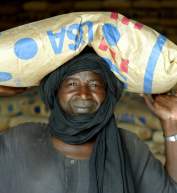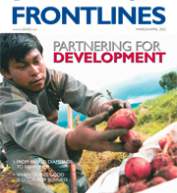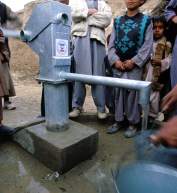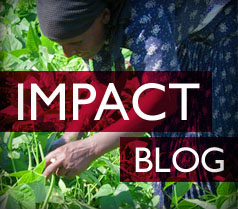- Agriculture and Food Security
- Democracy, Human Rights and Governance
- Economic Growth and Trade
- Education
- Environment and Global Climate Change
- Frontiers in Development
- Gender Equality and Women's Empowerment
- Global Health
- Science, Technology and Innovation
- Water and Sanitation
- Working in Crises and Conflict
- Responding in Times of Crisis
- Crises and Conflict Countries
- How We Do It
- Where We Work
- Afghanistan
- Benin
- Bosnia and Herzegovina
- Bulgaria
- Burkina Faso
- Burma
- Cambodia
- Cameroon
- Central African Republic
- Chad
- China
- Comoros
- Côte d’Ivoire
- Democratic Republic of the Congo
- Ecuador
- El Salvador
- Ethiopia
- Fiji
- Ghana
- Guatemala
- Haiti
- Honduras
- Horn of Africa
- India
- Indonesia
- Kenya
- Lesotho
- Liberia
- Madagascar
- Malawi
- Mali
- Mauritania
- Montenegro
- Mozambique
- Niger
- Pakistan
- Papua New Guinea
- Paraguay
- Philippines
- Republic of the Congo
- Senegal
- Somalia
- South Sudan
- Sri Lanka
- Sudan
- Syria
- Tanzania
- Thailand
- The Gambia
- The Sahel
- Tunisia
- Turkey
- Tuvalu
- Vietnam
- Yemen
- Why It Matters
- How To Help
- Resources
- Building Resilience
- Conflict Mitigation and Prevention
- Disaster Risk Reduction
- Peacebuilding and Reconciliation
- Promoting Peaceful Political Transitions
- Providing Safe & Secure Environments for Development
- Recovering From Crisis
- World Humanitarian Day
- Responding in Times of Crisis
Democratic Republic of the Congo

Since 1998, conflict between various armed groups and forces loyal to the Kinshasa government has contributed to high levels of insecurity and population displacement in the Democratic Republic of the Congo (DRC). An uptick in fighting that started in April 2012 between the Armed Forces of the DRC (FARDC) and the M23—a newly formed opposition group created by FARDC defectors—has resulted in significant new displacement in eastern DRC and to neighboring Rwanda and Uganda. Meanwhile, the Lord’s Resistance Army—having increased activity in the DRC since 2008—continues to impact populations in Orientale Province. Restricted humanitarian access, poor infrastructure, forced child recruitment into armed groups, violence, and reduced access to agricultural land and traditional markets contribute to the deterioration of humanitarian conditions. As of July 16, 2012, the U.S. Government (USG) had provided more than $88.5 million to support humanitarian activities in the DRC in Fiscal Year (FY) 2012.
USG HUMANITARIAN FUNDING PROVIDED IN FY 2012
|
USAID/OFDA Assistance to the DRC |
$18,565,539* |
|
USAID/FFP Assistance to the DRC |
$34,587,800 |
|
State/PRM Assistance to the DRC |
$35,402,115 |
|
Total USAID and State Assistance to the DRC |
$88,555,454 |
*(As of July 16, 2012)
Latest DRC Fact Sheet
Complex Emergency Fact Sheet #4 (FY2012) (373kb PDF) and map (749kb PDF)
Key Developments
The humanitarian situation throughout eastern DRC has deteriorated in recent months due to increased armed group activity. The number of internally displaced persons (IDPs) countrywide currently exceeds 2 million, according to the U.N. Office for the Coordination of Humanitarian Affairs (OCHA).
The DRC has not experienced such a high level of displacement since 2009. Fighting between the FARDC and the M23 opposition group—created by FARDC defectors in early April—has directly or indirectly displaced more than 220,000 people in North Kivu Province, according to OCHA. Some displacement is a result of fighting between the M23 and FARDC, while others have been displaced by advancing armed groups taking advantage of the security vacuum left by departing FARDC forces redeployed to fight the M23. The M23 conflict has also caused more than 45,000 people to flee to neighboring Rwanda and Uganda, according to the Office of the U.N. High Commissioner for Refugees (UNHCR). Displacement remains fluid; some households are returning to areas of origin while others are displaced multiple times by fighting.
Humanitarian organizations struggle to accurately capture the number of IDPs in a dynamic, operationally challenging environment. Armed groups are also taking new ground from departing FARDC forces in southern Orientale and South Kivu provinces. In South Kivu, where displacement nearly doubled between September 2011 and March 2012, humanitarian organizations are working to meet new needs despite poor access and insecurity.
@theOFDA
-
theOFDA
MT @USAID: We are the largest provider of in-kind food aid + one of largest providers of cash-based food asst in the world. #WFD2012
4 hours 6 min ago.
-
theOFDA
RT @UNICEF: Did you know handwashing with soap is the single most cost-effective health intervention ever? #iwashmyhands Please RT!
4 days 11 hours ago.
-
theOFDA
Women and Girls Reduce Disaster Risk Every Day t.co/ZGNjnYIf #IDDR
4 days 15 hours ago.








Comment
Make a general inquiry or suggest an improvement.